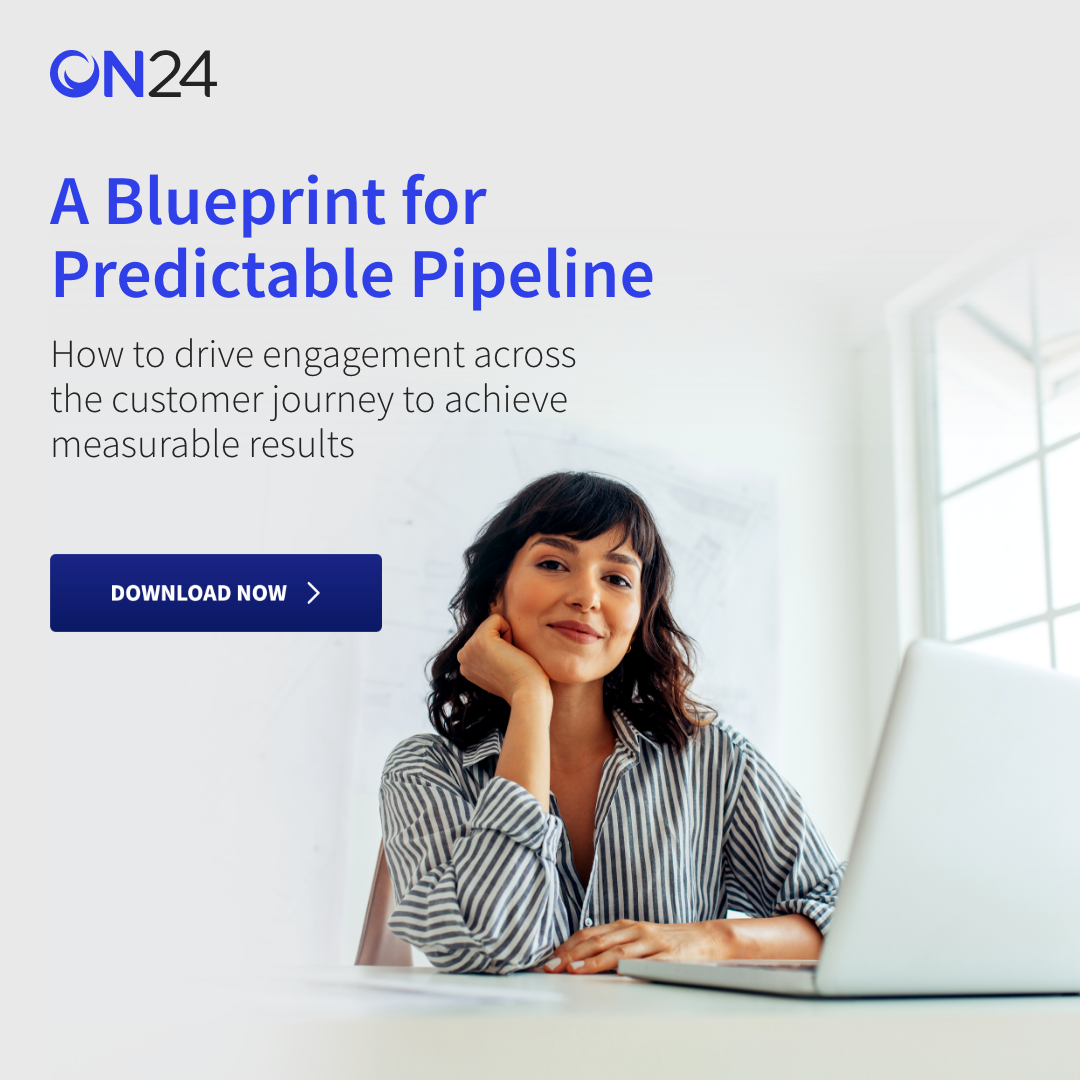Demand Generation vs Lead Generation – Key Differences

Understanding Demand Generation and Lead Generation
Demand generation and lead generation are two common terms that share similarities but have very different meanings and impacts in the marketing world. For example, demand generation refers to any marketing activity that raises brand and product awareness; lead generation refers to activities that convert brand-aware audiences into sales-ready leads.
Understanding the nuances between the two strategies is crucial for effective marketing that drives business growth. Let’s explore why and differentiate demand gen from lead gen so you can implement both as successfully as possible.
What is Demand Generation?

Demand generation is a strategy businesses use to stir up interest in products and services. The aim is to raise awareness among target audiences and begin the journey of generating high-quality leads.
Although demand can be stimulated throughout the buying journey, demand generation strategies mostly focus on the top of the funnel. This is where they can have the biggest impact, helping you to connect with potential customers long before they’ve signaled any intention to buy.
Goals of Demand Generation
The goals of demand generation can be summed up as follows:
-
- Raising brand awareness
- Generating interest in products or services
- Signaling brand expertise and establishing trust
- Increasing demand for products or services
- Nurturing prospects through the early stages of the buying journey
Key Tactics and Strategies
Effective demand generation strategies are built around educating and engaging the audience. The best ways to do this will be dependent on your individual business, but usually involve at least one of the following tactics:
Content Marketing
Content marketing creates valuable material that informs and inspires can help to showcase your expertise and attract new audiences.
Webinars
Hosting live events and on-demand webinars is one of the most effective ways to establish your brand as an industry expert while interacting with your audience directly.
Social Media
Social media platforms like LinkedIn and Instagram allow you to communicate with your target audience consistently, build brand awareness, and encourage customer engagement.
Search Engine Optimization (SEO)
Mastering SEO is key to increasing visibility and positioning your brand as the answer to your customers’ problems.
Search Engine Marketing (SEM)
Strategic advertising campaigns run across search engines like Google can help you reach potential customers who have expressed interest in your business’s solution.
Workiva: An Example of Successful Demand Generation
When done right, demand generation doesn’t just feed prospects into your business – it also feeds itself.
Workiva, a cloud-based document and data collaboration platform, determined the next phase of its content strategy by using the answers audiences provided during webinars as inspiration. This ensured that it covered topics their audience resonated with, spawning further engagement.
The automation features in the webinar capabilities powered the ON24 Intelligent Engagement Platform cut their manual input from 10 hours to just 1.5 hours per virtual event. This freed up valuable time to spend scaling their demand gen efforts – resulting in a 35% YOY increase in sales accepted leads (SALs).
What is Lead Generation?
Often, lead generation is a cross-function between marketing and sales. It aims to take the interest created through demand generation and mold it into fully-fledged leads primed for sales.
Once potential customers have been identified, marketing teams use lead generation strategies to nurture them through the sales funnel. They collect their contact information through various means, including gated content and email marketing.
Typically, this contact information is then handed over to sales teams, who convert leads into paying customers. Sales teams might also generate their own leads through cold calling and networking.
Advanced marketing teams typically apply lead scoring to their process—that is, evaluating the interest and likelihood of conversion—before handing leads over to sales. These leads are often referred to as Marketing Qualified Leads (MQLs).
Goals of Lead Generation
Lead generation has a few clearly defined objectives:
-
- Capturing contact information – the primary function of lead generation is to capture prospects’ contact information so that they can be reached and converted into customers.
- Qualifying prospects – prioritizing leads based on their likelihood of making a purchase helps to improve conversion rates and, ultimately, return on investment (ROI).
- Progressing through the sales funnel – good lead generation strategies should nurture prospects throughout the sales funnel, ensuring that their needs are met and their interest is sustained.
Key Tactics and Strategies
Building a pipeline of leads that successfully fuels revenue growth will always have its challenges. However, the following tactics and strategies are popular ways to yield consistent results:
Lead Magnets
Lead magnets are free resources designed to entice audiences into providing their contact information as part of a value exchange. These can include free trials, promotional offers, and gated content such as whitepapers and industry reports.
Email Marketing
Targeted emails containing personalized content, offers, or promotions are a great way of following up with prospects without being too intrusive.
Landing Pages
Dedicated landing pages allow you to focus on a specific conversion goal – for example, lead capture. Driving traffic through other channels can ensure that the right people are being exposed to the content.
Pay-Per-Click (PPC) Advertising
With PPC advertising, you can reach potential customers across search engines and social media. Depending on the platform, you can target audience search intent, interests, or demographics to ensure high-quality leads are being generated.
Calls-to-Action (CTAs)
The strategic placement of buttons, banners, and pop-ups on your website and other marketing materials can trigger action when interest is at its peak.
Invesco: An Example of Successful Lead Generation
Invesco, an independent investment management company, streamlined and enhanced its lead generation efforts using ON24.
By increasing engagement during events, Invesco gathered data and insights that helped them understand their clients’ specific interests. Taking advantage of the seamless Salesforce integration, their sales teams were then able to follow up with targeted copy personalized to each customer.
One way Invesco enhanced its event engagement was by strategically deploying CTAs. These CTAs allowed the company to drive prospects directly to its website and contact forms, contributing to a 300% increase in leads per webinar.
Key Differences Between Demand Generation and Lead Generation

To ensure that their unique aims are achieved, it’s important to distinguish between demand generation and lead generation. Here are the key differences that will help you understand how to approach each strategy.
Objective Comparison
The primary objective of demand generation is to build awareness and sustained interest among the target audience. On the other hand, the primary objective of lead generation is to capture qualified prospects and convert them into sales-ready leads.
Target Audience
Demand generation targets a broad audience. The goal is to reach as many potential customers as possible, whereas lead generation focuses on converting established prospects. It might help to think of demand generation as creating a pool of prospects ready to be dipped into during lead generation.
Metrics and KPIs
The metrics and key performance indicators (KPIs) used to measure success in lead and demand generation campaigns vary depending on the techniques utilized.
In demand generation strategies, KPIs are typically engagement and awareness metrics like:
-
- Website traffic
- Event registrations/attendees
- Social media interactions
- Newsletter sign-ups
- Content downloads
For lead generation, it’s usually conversion and lead metrics such as:
-
- Form submissions
- Lead response time
- Sales-qualified leads (SQLs)
- Cost per lead (CPL)
Timeframe and Sales Cycle
Demand generation is a long-term marketing strategy focusing on continuous engagement. It takes place during the early stages of the sales cycle and, when successful, provides a consistent pipeline of potential customers. It can take time to see the true ROI of demand generation as prospects progress through the funnel at varying paces.
The results of lead generation campaigns can be seen more immediately. Because this strategy focuses on converting prospects who have already indicated interest, the sales cycle is usually much shorter.
How Demand Generation and Lead Generation Complement Each Other

Demand generation and lead generation each play a part in the buying journey. Demand generation helps businesses to reach audiences and raise awareness during the initial stages. Lead generation then nurtures prospects through the decision-making stages.
To provide customers with a seamless experience, it is key to take a unified approach to demand generation and lead generation. While they are separate strategies with distinct goals, they can assist each other as they work together to influence the buying journey.
Demand generation campaigns produce valuable insights into audience interests and behavior, which can inform lead generation tactics. Similarly, analyzing which channels have the highest lead conversion rates and what roadblocks crop up during lead generation can help optimize demand gen strategies.
Many companies have successfully integrated their demand gen and B2B lead generation strategies. For example, multinational software corporation Autodesk leveraged the ON24 platform to scale up their demand generation and accelerate their lead generation. In doing so, the business saw 10% shorter sales cycles and 12x ROI on pipeline within six months.
Tips for Implementing Demand and Lead Generation Strategies

We’ve put together some tips to help you integrate and implement your demand generation and lead generation campaigns successfully:
-
- Create educational content – address your audience’s pain points with high-quality, informative content and position yourself as an industry authority.
- Use AI strategically – save time and maximize value by repurposing existing content into new assets with a generative AI content tool.
- Develop lead magnets – free trials, demos, and other compelling offers can incentivize audiences to provide their contact information.
- Optimize your landing pages – badly designed landing pages without clear CTAs can put off prospects and stunt conversion rates.
- Deliver personalized experiences – specialized tools like the ON24 intelligent engagement platform can deliver personalized experiences that increase engagement throughout the buying journey.
- Test regularly – experiment using A/B testing and data analysis to ensure you’re driving continuous improvement.

